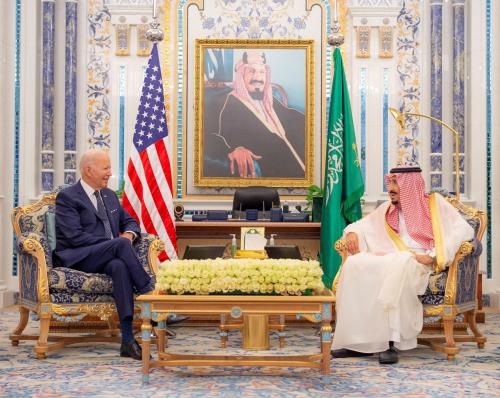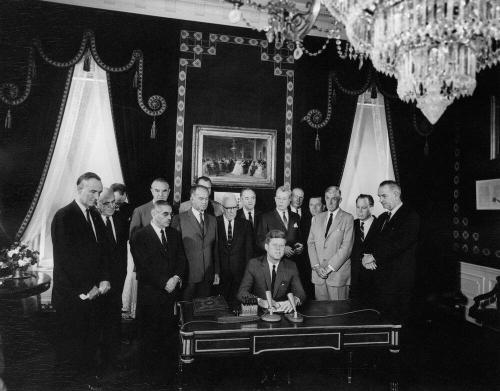This week’s release of a long-awaited report by the International Atomic Energy Agency draws to an end the dozen-year-long investigation into the military dimensions of Iran’s nuclear program. It also moves the July 2015 nuclear deal one step closer to “Implementation Day.”
On that date, which could come as early as next month, the United Nations will certify Iranian compliance with its obligations under the deal, including wide-ranging constraints on its centrifuge activity, enriched uranium stockpiles, and many other aspects of its nuclear infrastructure and supply chain. In exchange, the U.N. and the rest of the international community—including Washington—will end a vast array of nuclear-related sanctions that have wreaked havoc on Iran’s economy over the course of the past five years.
The IAEA report did little to satisfy American critics of the nuclear deal, but it was trumpeted as a victory by Iran’s President Hassan Rouhani in a message broadcast Wednesday on state television. Iranian leaders were adamant throughout the negotiations that any deal must bring a formal end to the cloud of suspicion that has hung over the country since the 2002 revelation of its then-covert nuclear program. As the architect of an earlier agreement that Tehran abrogated in 2005 over accusations that the West had failed to deliver on its end of the bargain, Rouhani himself had a major stake in demonstrating that this deal was not a case of bait-and-switch. ##1##
Change is gonna come
The next major test will come in the aftermath of Implementation Day, as sanctions relief enables the restoration of financial and trade ties between Iran and most of the rest of the world, with the exception of the United States. In his latest message, Rouhani explicitly welcomed the prospect of new foreign investment in Iran, as he has in the past. This position resonates with the Iranian population, for whom economic opportunities and sanctions relief are a top priority.
Still, many powerful political and economic actors in Iran remain determined to prevent the nuclear deal from facilitating any grand opening to the West, and their trepidations of Western influence have precipitated an intensified crackdown in Iran that is extending directly to the economy. Supreme Leader Ayatollah Ali Khamenei has repeatedly extolled Iran’s “economy of resistance,” an approach intended to insulate Tehran from external economic shocks. He and other hard-line politicians have been particularly hostile toward what they see as the creeping scourge of American culture through the economy.
In November, Iran’s Ministry of Industry, Mine, and Trade banned all American consumer goods from entry, and just this month, the country’s Trade Promotion Organization placed an import ban on over 220 U.S.-made goods. At least a few of the many improvised replicas of well-known American brands—such as a “Halal KFC” restaurant in Tehran—have been closed as a show of defiance against what Khamenei has described as “economic infiltration.” And an Iranian-American entrepreneur arrested in October remains behind bars today, in a case that will surely compound concerns among prospective foreign investors about legal protections and the security of personnel in post-deal Iran.
He and other hard-line politicians have been particularly hostile toward what they see as the creeping scourge of American culture through the economy.
But it would be misleading to presume that Iranians can’t get Western goods. In fact, even at the height of sanctions, consumer goods from the United States, Europe, and Asia—including luxury products—were widely available in Iranian shops thanks to smuggling and other creative forms of trade. As documented in these photographs from March 2015—months before the signing of the nuclear deal—some store shelves and windows in Iran are virtually indistinguishable from those in New York or London. In a 2012 Associated Press article, Nasser Karimi and Brian Murphy wrote that in Iran, despite economic sanctions, “[i]t’s possible to check your emails on an iPhone, sip a Coke and hit the gym in a pair of Nikes.”
And yet alongside and mixed among Western commercial products, there are images demonstrating loyalty to revolutionary figures and expressions of Iran’s complicated relationship with the international community. As these photos suggest, Iran has a way of confounding expectations, and its economic rehabilitation after sanctions relief is implemented early next year will almost surely do so again.



Commentary
Buying Nikes in Tehran: The life and death of sanctions in photos
December 18, 2015